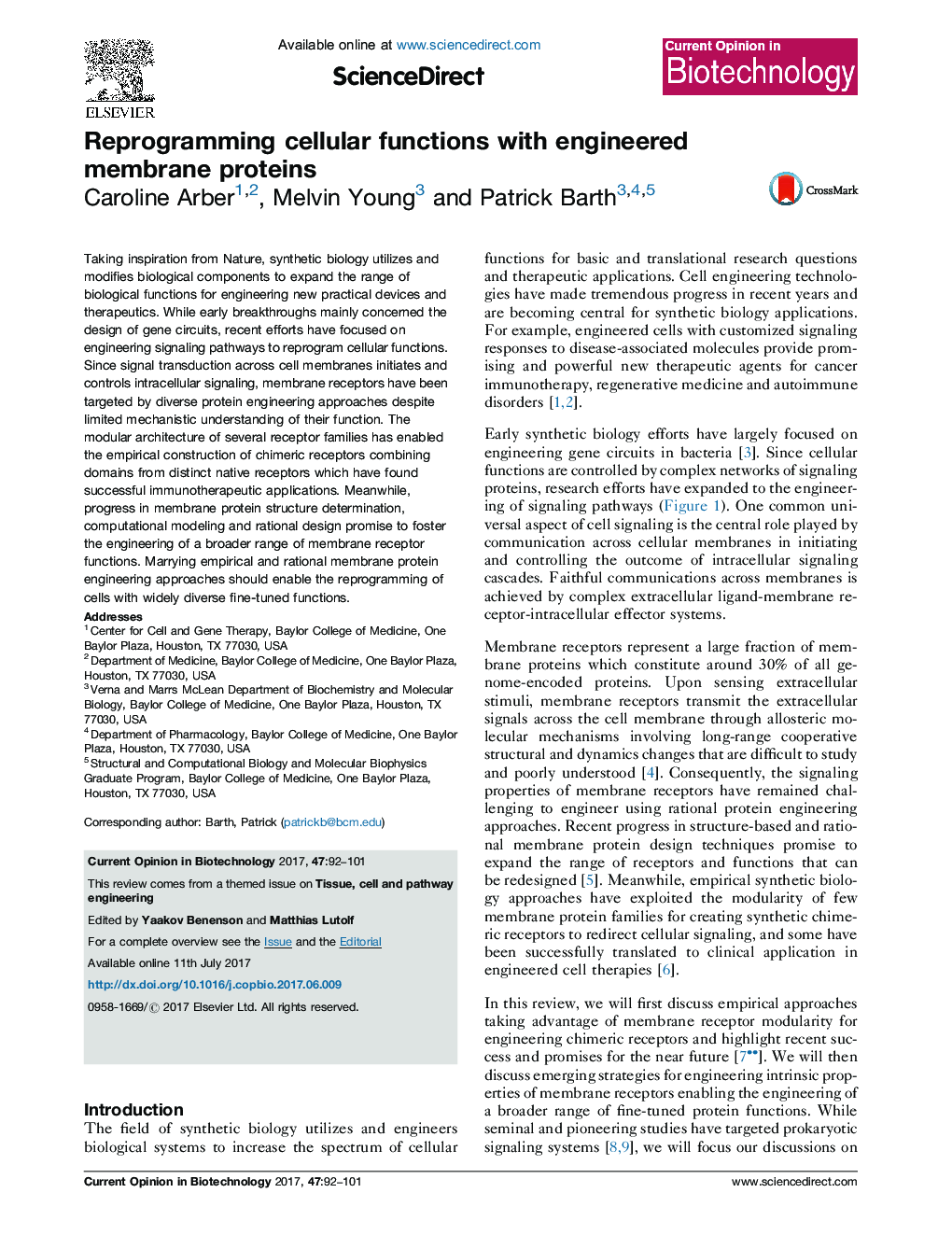| Article ID | Journal | Published Year | Pages | File Type |
|---|---|---|---|---|
| 6451426 | Current Opinion in Biotechnology | 2017 | 10 Pages |
â¢Engineered membrane receptors can control and reprogram cell functions.â¢Empirically designed chimeric receptors combine domains from modular receptors.â¢Chimeric receptors enable immune cells to target tumor cells.â¢Rational protein design can target receptors with complex integrated fold.â¢Marrying empirical and rational design can engineer cells with diverse functions.
Taking inspiration from Nature, synthetic biology utilizes and modifies biological components to expand the range of biological functions for engineering new practical devices and therapeutics. While early breakthroughs mainly concerned the design of gene circuits, recent efforts have focused on engineering signaling pathways to reprogram cellular functions. Since signal transduction across cell membranes initiates and controls intracellular signaling, membrane receptors have been targeted by diverse protein engineering approaches despite limited mechanistic understanding of their function. The modular architecture of several receptor families has enabled the empirical construction of chimeric receptors combining domains from distinct native receptors which have found successful immunotherapeutic applications. Meanwhile, progress in membrane protein structure determination, computational modeling and rational design promise to foster the engineering of a broader range of membrane receptor functions. Marrying empirical and rational membrane protein engineering approaches should enable the reprogramming of cells with widely diverse fine-tuned functions.
Graphical abstractDownload high-res image (112KB)Download full-size image
